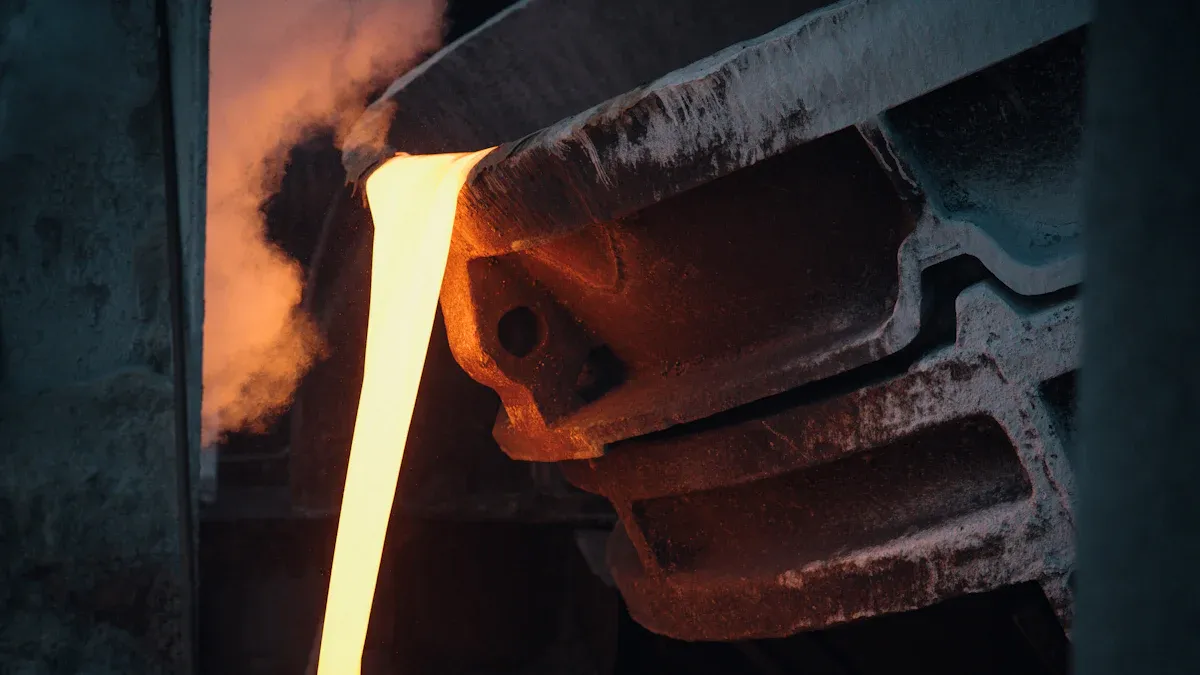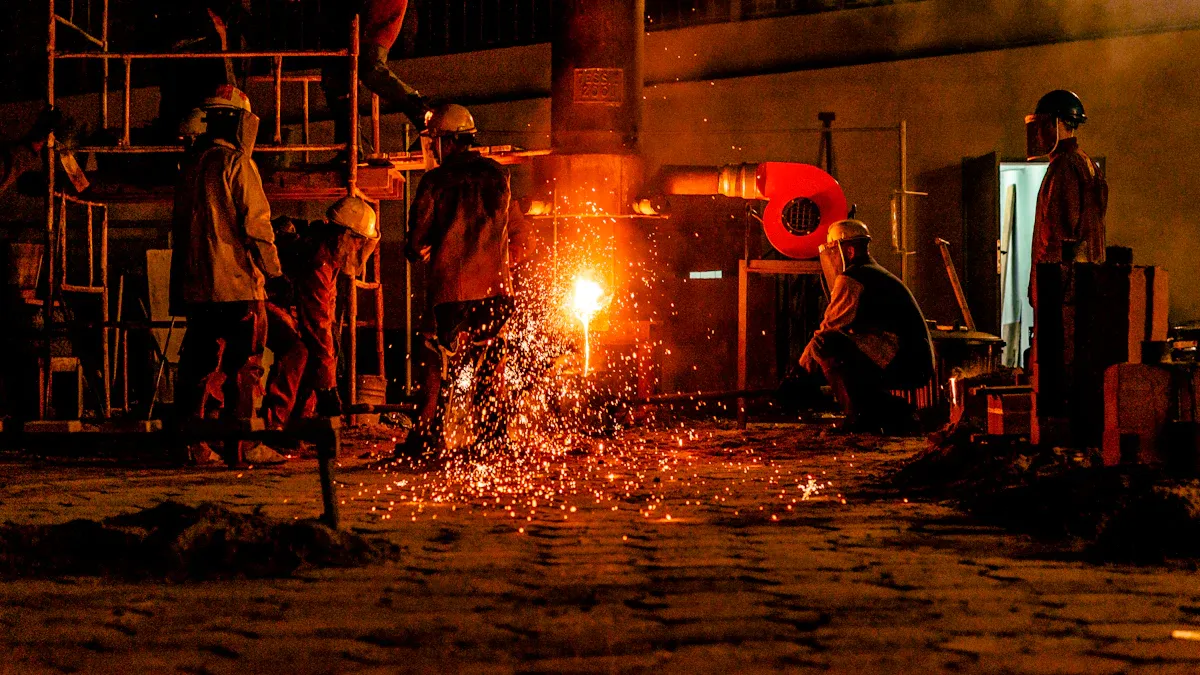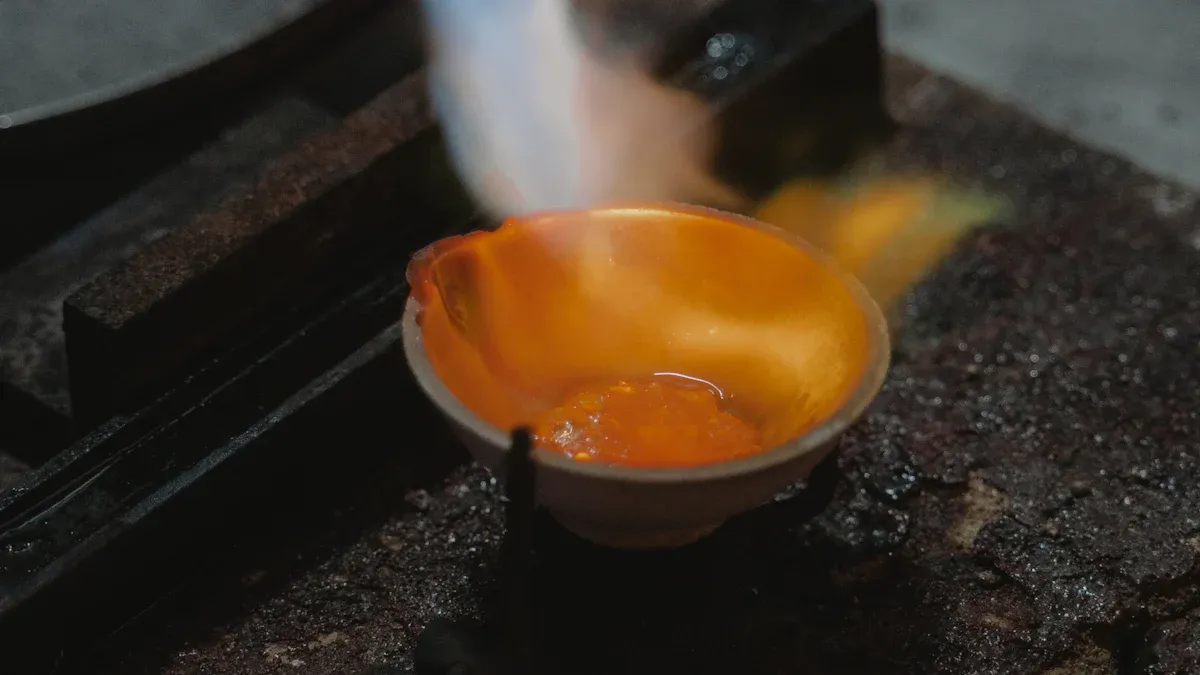
Casting makes things by pouring hot liquid into a mold. Investment casting uses a wax shape and a ceramic shell. It makes metal parts that are very exact and smooth. People pick a method based on how accurate it is, how much it costs, and how hard the part is to make.
Casting works well for simple shapes and lots of pieces.
Investment casting is good for tricky designs and close fits.
New ideas use 3D printing for patterns, better ceramics, and robots. These help make things better and faster.
Key Takeaways for Casting
Casting works well for simple shapes and making many parts. Investment casting is better for making parts with lots of detail and accuracy. Investment casting uses a hard process with wax patterns and ceramic molds. This makes surfaces smoother and sizes more exact. Pick a casting method by looking at the material, how many parts you need, and your budget. Investment casting is good for small or medium batches that need high accuracy. Both casting types have good and bad points. Casting saves money when making lots of parts. Investment casting gives better quality for parts with complex shapes. KEMING offers many metals for casting. This helps companies choose the best material for what they need.
Casting Overview and Basic Manufacturing Principles Explained
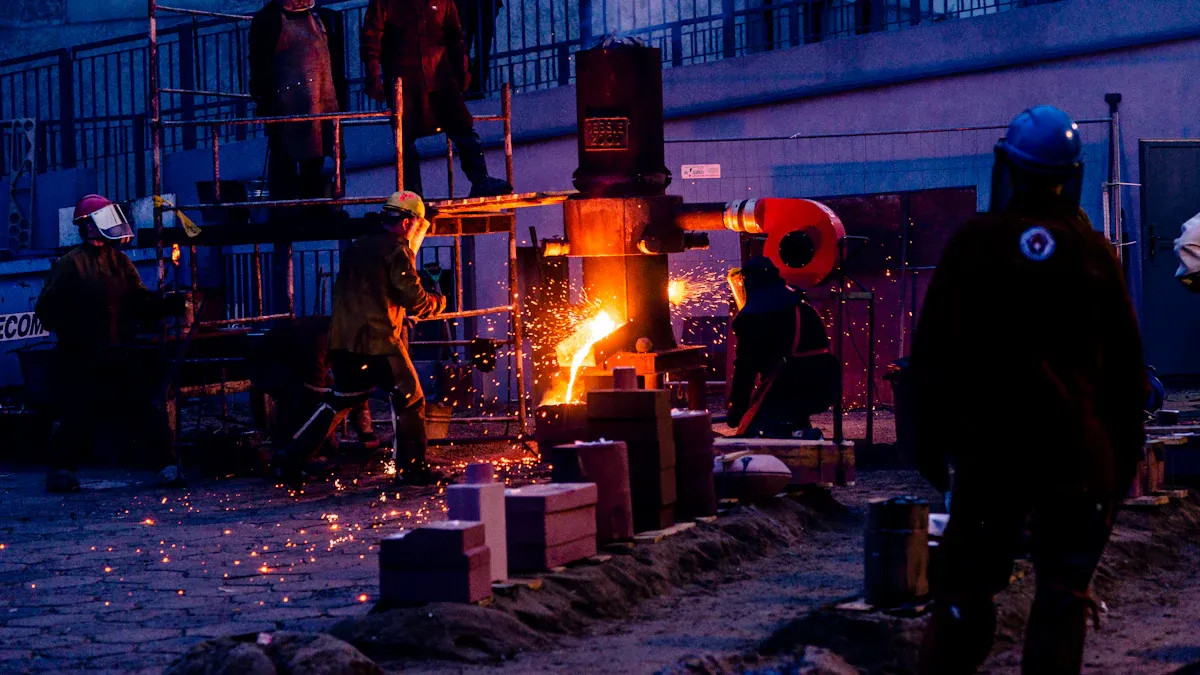
Common Methods of Casting in Metal Production
Casting shapes metal and other stuff in many ways. Each way is good for different sizes and shapes. People pick a method based on what the part will do. Some common ways are:
Die Casting
Investment Casting
Plaster Casting
Centrifugal Casting
Permanent Mold Casting
In every method, workers pour hot liquid into a mold. The mold gives the part its shape. When it cools and gets hard, they take it out. This lets people make easy or hard shapes.
Typical Casting Materials
People use many materials for casting. The choice depends on what the part needs to do. Some popular metals are:
Aluminum
Zinc
Copper
Ductile Iron
Gray Iron
Steel
These metals have different strengths and weights. Some do not rust easily. Aluminum is light and does not rust much. Steel is very strong and lasts a long time. Some ways, like investment casting, work with many metals.
Industrial Uses and Applications of Metal Casting
Casting is important in many jobs. It helps make parts for machines, cars, and art. The table shows how casting is used in different areas:
Sector | Applications |
|---|---|
Transportation | Automotive, aerospace, railway, and shipping components |
Heavy Equipment | Construction, farming, and mining machinery parts |
Machine Tools | Machining centers, casting equipment, plastic molding machinery |
Plant Machinery | Chemical processing, petroleum refining, thermal power generation |
Defense | Military vehicles, artillery systems, munitions |
Electrical Machinery | Motors, generators, pumps |
Municipal Infrastructure | Pipes, joints, valves, fittings |
Household Applications | Appliances, kitchen equipment, furniture components |
Artistic Applications | Sculptures, decorative furniture, ornamental items |
Note: Casting can make big or small parts. This makes it useful for many things.
Investment Casting Overview and Precision Manufacturing Process
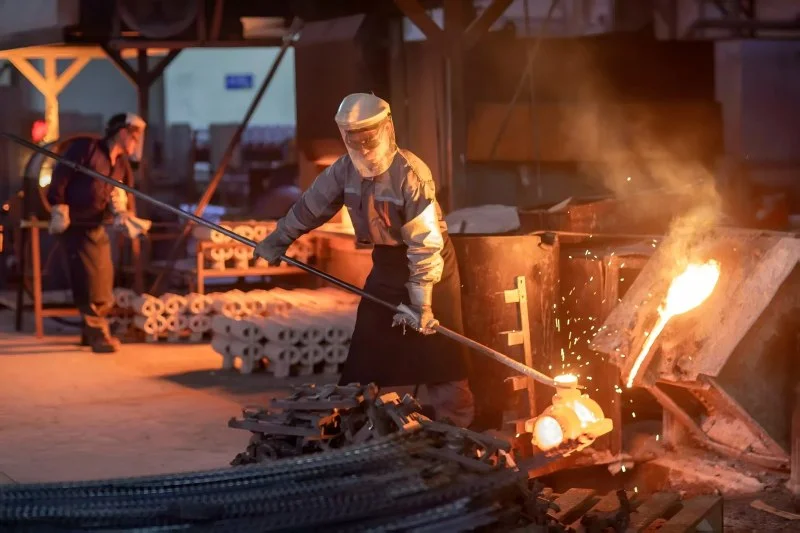
Step-by-Step Investment Casting Process Explained Clearly
Investment casting has many careful steps. First, workers make a wax pattern. They put wax into a metal mold. This makes the shape of the part. Many wax patterns go on a wax rod. This looks like a tree. Workers dip the wax tree in a ceramic liquid. The liquid dries and gets hard. It forms a shell around the wax. Next, they heat the shell. The wax melts and leaves the shell empty. Now, workers pour hot metal into the shell. The metal cools and gets hard. They break the shell to get the metal parts. Workers cut the parts off the metal tree. Each part gets checked for quality. KEMING uses good machines and strong checks. This helps every part meet world standards.
Investment Casting Materials for Complex Metal Components
Investment casting uses many metals. Each metal has special uses. The table shows some metals and what they do:
Material | Properties | Applications |
|---|---|---|
Stainless Steel | Strong, lasts long, does not rust | Gears, medical tools, food equipment |
Aluminum Alloy | Light, does not rust | Aerospace, car parts |
Carbon Steel | Cheap, strong | Motors, appliances |
Super Alloy | Stays strong when hot | Turbine blades, energy equipment |
Copper Alloy | Does not rust, wears down slowly | Plumbing, electrical parts |
Cast Iron | Tough, handles heat well | Big machines |
KEMING has many metals to pick from. They offer stainless steel, aluminum, carbon steel, and super alloys. Their factory can make special parts for many jobs.
Common Applications of Investment Casting in Industry
Investment casting makes parts for many fields. The table shows where it is used:
|
Industry |
Applications |
|---|---|
|
Aerospace |
Engine parts, turbine blades |
|
Engine valves, transmission parts |
|
|
Medical |
Surgical tools, implants |
|
Energy & Industrial |
Pump housings, valves |
|
Consumer Electronics |
Connectors, device cases |
KEMING helps aerospace, car, marine, and medical companies. Their team makes special parts for hard designs and exact needs.
Tip: Investment casting is great for making parts with hard shapes and close fits. KEMING’s skill and tools help customers get strong, good parts.
Casting vs. Investment Casting
Process Comparison Between Casting and Investment Casting
Casting and investment casting both shape metal by pouring it into a mold. But they use different molds and steps. Regular casting uses molds made from sand or metal. These molds can be used many times. In investment casting, workers make a wax pattern for each part. They cover the wax with a ceramic shell. This shell becomes the mold. The ceramic mold is used only once. Workers break it to get the part out.
Casting Method | Mold Type |
|---|---|
Investment Casting | Disposable ceramic molds |
Other Methods | Reusable molds (metal/sand) |
Investment casting uses wax patterns and ceramic molds that are thrown away.
Other casting methods use molds made from sand or metal that can be used again.
Investment casting has more steps. Workers make a new wax pattern and ceramic shell for every part. This lets them make parts with more details. Regular casting is faster for simple parts. The same mold can be used over and over.
Tip: Investment casting is best for parts with tricky shapes and small details. Regular casting works well for big, simple, or lots of parts.
Cost Differences Between Casting and Investment Casting
The cost to make parts depends on the method. Investment casting costs more at the start. Workers must make new patterns and ceramic molds for each part. It also takes more time and skill. But investment casting can save money later. The parts come out smoother and more exact.
Investment Casting | Sand Casting | |
|---|---|---|
Upfront Tooling Cost | Medium to High | Medium |
Tooling Maintenance | Low | Low to Medium |
Cost to Change Design | High | Low to Medium |
Post-Cast Machining | Low | Low to Medium |
Total Labor Costs | Medium to High | Medium |
Total Lead Time | Long | Medium |
Best Run Size | Medium to Long | Low to Medium |
Investment casting is better for small or medium batches. It is good when the part must be very exact. Sand casting is better for big, simple parts. It is also good if the design might change.
Precision and Accuracy in Investment Casting Process
Precision means how close the part is to the right size and shape. Investment casting gives a smoother surface and tighter fit than regular casting. This means the parts need less extra work after casting.
Casting Method | Surface Finish (Ra) | Tolerances (inches) | Machining Required |
|---|---|---|---|
Investment Casting | 125 | .005/inch | Low |
Sand Casting | 250 | Cannot hold tight tolerances | Extensive machining needed |
Investment casting can make parts with tiny details and smooth surfaces. Sand casting leaves a rougher finish and cannot hold tight sizes. Workers often need to machine the parts after.
Choosing the Right Method for Your Applications
Picking between casting and investment casting depends on what the part does and how many are needed.
Use investment casting for:
Parts that need to be very exact
Hard shapes or thin walls
Smooth surfaces
Small or medium batches
Both ferrous and non-ferrous metals
Jobs like power plants, cars, and planes
Use sand or die casting for:
Big, simple parts
Making lots of parts
Lower cost per part
When the design might change
Note: Investment casting is great for engine parts, turbine blades, and medical tools. Sand casting is used for big machine parts and pipes.
Both ways can affect the environment. Investment casting uses more energy. But companies try to waste less and recycle more. Regular casting can use more chemicals. Both ways are working to be better for the planet.
Pros and Cons of Casting and Investment Casting Methods
Casting Advantages
Casting is good for making big parts and simple shapes.
Many metals can be used, like aluminum, steel, and iron.
Some casting methods let factories use molds again. This saves time and money.
Casting can make lots of parts fast, so it is good for mass production.
It is easy to change designs, which helps when updates are needed.
Note: Casting is still a top pick for companies that want strong, simple parts for less money.
Casting Disadvantages
Cast parts often feel rough because of the mold’s texture.
These parts are not as exact and cannot hold tight sizes.
Problems like shrinking, gas bubbles, or sand can happen.
Workers deal with high heat and dust, which is tough.
Castings are not as strong as forged parts of the same size.
Common Issues in Casting:
It is hard to control every step.
Cast parts can have more problems.
The size is not always the same.
Castings do not hold as much weight as forgings.
The work area can be rough.
Investment Casting Advantages
Benefit | Description |
|---|---|
Design Flexibility | Makes tricky shapes and detailed parts. |
Quality Consistency | Gives accurate castings with fewer problems than sand casting. |
Material Variety | Works with many metals, like stainless steel and aluminum alloys. |
Cost-Effectiveness | Good for both small and big production runs. |
Investment casting makes smooth parts and holds tight sizes. Wax patterns and ceramic shells help make fine details. Factories can use many metals to meet different needs. Fewer parts get rejected because of careful checks.
Tip: Investment casting is great for companies that need exact, high-quality parts.
Investment Casting Disadvantages
Limitation Type | Description |
|---|---|
High Upfront Costs | Making wax patterns and ceramic molds costs more at first. |
Time-Intensive Process | Making and drying ceramic molds takes more time. |
Size Limitations | Best for small to medium parts; big parts are harder. |
Labor-Intensive | Skilled workers must do the hard steps, which raises costs. |
Not Ideal for Low Volumes | High costs make it less useful for very small batches. |
Investment casting takes longer and costs more at the start. It works best for small or medium parts. Factories need skilled workers, so costs go up. For very small orders, other casting ways may cost less.
Choosing the Right Casting Method for Your Project
Important Factors When Selecting a Casting Process
Picking the best casting method depends on many things. Every project needs something different. These points help you decide:
Material Selection: Some metals work better with certain methods. Investment casting works well with stainless steel and copper alloys. Die casting is good for non-ferrous metals like aluminum.
Production Volume: Sand casting and plaster casting are good for small batches. Die casting and permanent mold casting are best for making lots of parts. Investment casting is great for medium or big batches when you need precision.
Precision and Tolerance: Investment casting makes smooth parts with tight fits. Sand casting is less exact and leaves rough surfaces.
Part Complexity: Investment casting can make tricky shapes and tiny details. Sand or die casting is fine for simple shapes.
Budget: Sand and plaster casting cost less for small jobs. Die casting and investment casting cost more at first but can save money for big batches.
Cycle Time: Die casting makes parts fast. Investment casting takes longer because of extra steps.
Machining Needs: Investment casting needs less extra work. Sand casting often needs more finishing.
Tip: Always pick the casting method that fits your project’s size, shape, material, and budget.
Here is a table that shows how different casting methods compare for budget and how many parts you need:
Casting Method | Budget Consideration | Volume Suitability |
|---|---|---|
Sand Casting | Good for small budgets | Best for small batches |
Plaster Casting | Good for small jobs | Best for small batches |
Die Casting | Costs more at first, good for lots of parts | Best for big batches |
Investment Casting | Costs medium to high, good for exact parts | Best for medium or big batches |
Permanent Mold Casting | Costs more, good for lots of parts | Best for big batches |
Manufacturers know casting and investment casting are not the same. The table below shows the main differences:
Aspect | Investment Casting | Traditional Casting |
|---|---|---|
Precision | High, detailed parts | Lower, simpler shapes |
Surface Finish | Smooth, minimal machining | Rougher, more finishing needed |
Volume | Best for small to medium runs | Suited for large batches |
Cost | Higher setup, lower per-part cost | Lower setup, higher per-part cost |
These things help people pick the right method. If a part is tricky and needs to be exact, investment casting is best. If a part is big and simple, traditional casting works better. Companies like KEMING check parts carefully and follow world rules. They can also make special parts for customers.
Good partners help make sure every part is made right for tough jobs.
FAQ
What is the main difference between casting and investment casting?
Casting uses molds that can be used again for easy shapes. Investment casting uses ceramic molds that are thrown away after one use. Investment casting makes parts with more details and smoother surfaces.
Which metals can investment casting use?
Investment casting works with lots of metals. Some common ones are stainless steel, aluminum, carbon steel, and copper alloys. KEMING has many materials for different jobs.
Why do companies choose investment casting?
Companies use investment casting when they need parts with exact shapes. This way makes strong, smooth, and detailed parts for planes, medical tools, and cars.
Is investment casting more expensive than sand casting?
Investment casting costs more at first because of the wax and ceramic molds. It can save money later since less extra work is needed. Sand casting is cheaper for big, simple parts.
Can investment casting make custom parts?
Yes, investment casting can make special parts for customers. KEMING helps design and make parts that fit what each customer wants.

